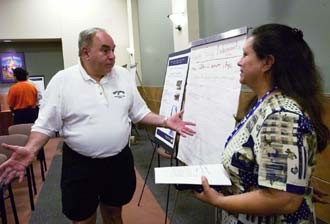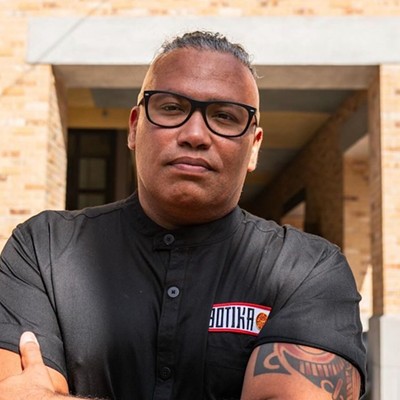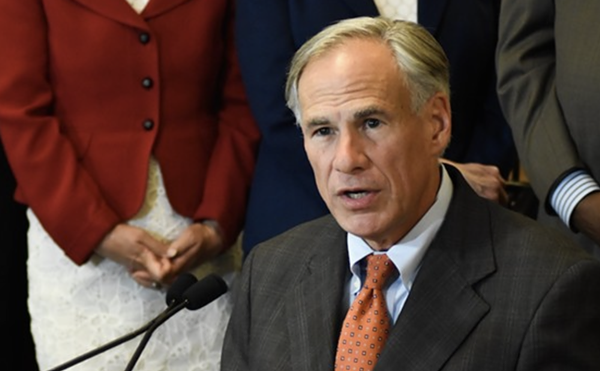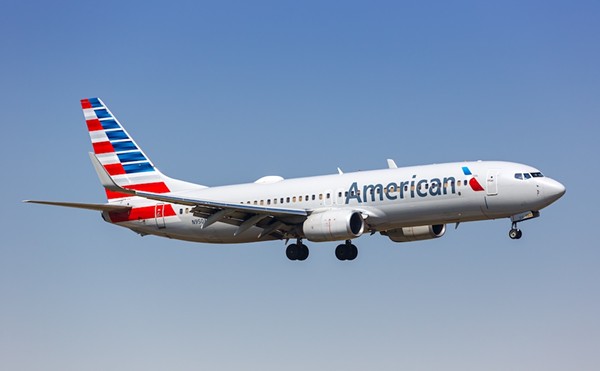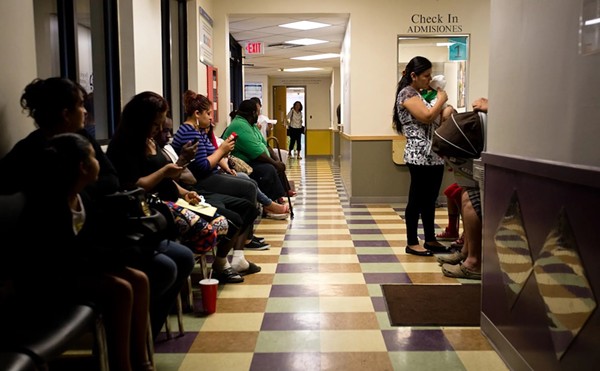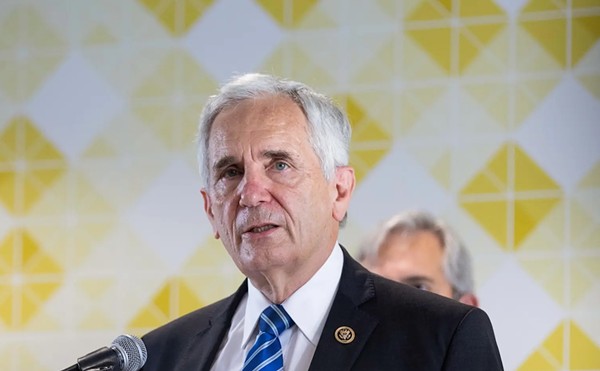|
By Jodie Briggs 9:16 a.m.: I am alone at the bus stop. After waiting three minutes for the bus, I call the VIA number displayed on the top of the sign. Since construction appears to have closed the stop closest to my apartment, I am slightly farther along the route. If my calculations are correct, the bus that would have stopped at the construction site at 9:15 should reach me around 9:20. I am wrong. By an hour. The friendly automated voice tells me that the next No. 648 bus will arrive at 10:08 a.m. For the past decade, VIA, the city's public transit system has struggled financially, to the point where it currently operates on just one month's worth of reserve funds. Although San Antonio's population has increased - as have traffic congestion and air pollution from cars and trucks - funding shortfalls have prompted VIA to cut back on routes. To right itself, VIA has proposed an ambitious 10-year plan that its officials say would lift it out of the red and improve the quality of service. `See box, facing page.` It would also create an Advanced Transportation District that would be responsible for allocating money to fix roads, manage traffic flow, and build sidewalks as part of a larger mobility plan. Yet, there is a catch: Additional funding for the plan is contingent upon a voter-approved referendum that would increase the amount of local sales tax VIA receives by either 1/4-cent, which VIA considers the minimum necessary to maintain service, or by 3/8-cent. If voters don't approve the referendum, which will be on the November ballot, VIA would reduce its service further, in addition to last years' cutbacks in routes. "We're trying to save the economic life of the transit system," Shelton Padgett, chairman of VIA's Board of Trustees told City Council on June 9. During the 1980s, VIA was running smoothly, and annual riderships reached an all-time high of 48 million trips. Then in 1991, the transit system hit a rut, when Congress passed the Americans With Disabilities Act, requiring VIA to provide VIATrans, a special service for the disabled. It is a necessary service, said Padgett, but an expensive one, and since Congress didn't allocate any funding for the required service, it costs VIA about $18 million a year - about 20 percent of its budget - while the disabled service accounts for only 2 percent of its service. Since the mid-1990s, VIA has shrunk its service. As routes have disappeared or riders must walk farther to their bus route, ridership has decreased to 38 million trips last year. Meanwhile, SA's population increased, as did the number of cars on the road. According to Thomas Wendorf of the City's Public Works department, San Antonians wasted 38 million gallons of gas in 2001, costing drivers $450 million. "We have not grown with the community," Padgett said. Moreover, ff the City doesn't more efficiently manage traffic flow and if VIA further reduces service, San Antonio will be at the point of gridlock by 2030. 9:45 am: I'm joined at the stop by a young woman carrying a shopping bag. "I take the bus to come to this cell phone store," Valerie Villasenor explains. "Even though it takes about two hours and three buses, it's worth it." Villasenor has also lived in Chicago, where she used its elevated trains. "That's something they'll never put out here," she says. "There's no work power and no money." Asked if she'd make any changes to San Antonio's bus system, Villasenor says no: "I get where I need to go." At 10:06 a.m., the No. 502 arrives. Although it's not the bus I'm waiting for, its scrolling message tells me that it goes to my destination. Four minutes later, I arrive at a transfer stop where I meet longtime rider Ed Henderson. "I like this bus system better than Houston's," he says. "It's only 15 cents for a transfer. You pay $1 there and they give you a piece of paper. It doesn't get you anything, though. No transfers in Houston." I ask him about changes he might make to VIA. "I'd like to see 648 here more often," he says. The comparatively low sales tax also hurts VIA, Padgett said. Under Texas law, local transportation agencies can receive up to 1 cent of sales tax to supplement their costs. Unlike Dallas, Houston, and Austin, San Antonio decided not to allocate the full cent tax, opting for a half-cent tax instead. However, the Texas legislature has allowed VIA to collect the remaining half-cent in 1/8-cent increments to fund an Advanced Transportation District (ADT), which will fund the 10-year plan.
Another proposal is a 1/4-cent increase, which translates into $17 million, slightly less than it costs to run the VIATrans service. Under this proposal, the city would receive $8.5 million, as would the Texas Department of Transportation for road, sidewalk, and highway maintenance. "The half-cent tax served us well but it's time for an increase," said San Antonio Mobility Coalition Council member Sam Dawson, whose group proposes raising the amount of sales tax VIA receives to 3/8-cent. Mel Feldman, a 50-year veteran of public transportation systems, also supports the plan but recognizes the need for improvements. "I'll pay extra, but give me better service." Not everyone is open to the change. Jack Finger of the Homeowners Tax Payer's Association opposes the tax increase. "We as taxpayers believe we are being taxed enough. I don't believe we'll receive enough benefits," he said at a June 10 VIA public hearing. But Padgett disputes the idea of a "VIA tax." "It's bigger than VIA," he said. "If we want to address needs rather than wants, we need to address them in a comprehensive way." Other VIA critics support the plan. The Just Transportation Alliance, a division of the Texan Citizen Fund, which in recent years rebuked VIA for cutting routes, now supports the transit system's sales tax proposal. Glenn Gadbois, director of transportation programs for the Texas Citizen Fund thinks the current situation, left untouched, will only get worse. "VIA has been a strangled service," he said. "The more the city grows, the more strangled it gets." Gadbois said VIA has done reasonably well with its current budget, but sees many ways in which VIA could use the additional money, including addressing the service gap in areas where routes have been cut. Even at existing bus stops, says Gadbois, improvements could be made. "It's a greeting to customers; it's a neighbor in the community," Gadbois explained, suggesting the addition of streetlights, landscaping, and improved sidewalks. "Good neighbors work with others to add something to the community." At 10:17 a.m., an hour after my journey began, the No. 3 bus arrives. When I board, I double-check with the driver about my next transfer point. He assures me that at St. Mary's and Travis streets I can transfer to the No 8, which will take me to work. Sitting near the front, I notice a VIA poster advertising the 10-year plan. "Where Do You Want VIA To Be in 10 Years?" it asks in large print. Despite the sign and two more I see on the journey to work, no one I speak with is aware of the proposed plan. 11:01 a.m.: When I disembark at the transfer point, I notice that the No. 8 bus is not listed among buses that service the stop. Anxious, I call the VIA number. Mumbling something about Navarro Street, the operator nevertheless reassures me that the No. 8 will arrive at the stop. To double-check, I walk farther down St. Mary's to the next bus stop, where I meet Velma McMillon, a 47-year veteran of San Antonio public transportation. "It's so good, the bus takes me anywhere I need to go in the city," she says. At 73, McMillon qualifies for VIA's senior citizen discount. "I have a pass for a month and get anywhere I want for $10," she explains. McMillon says most of the changes over the years have been positive. "It's so much different than it used to be. It's going to be changed, along with the times." On June 11, VIA made a presentation to City Council, hoping to receive its blessing. VIA got what it came for - in part. Mayor Ed Garza cautioned VIA that while he considers public transportation a priority, the public transit system must provide the public with details. "The big thing voters are looking for is a plan, a budget, special projects they can feel and touch," he said. "Be very explicit on what people are getting." At 11:17 a.m., I finally find the correct departure point and wait no more than a few minutes before the No. 8 bus arrives. On the last leg of my trip I briefly meet Sue Caron. "I didn't even know this bus goes on the expressway," Caron says when I ask if she's well-informed about recent route changes. As the bus barrels along North St. Mary's, I ask her about the transportation forums. "I wouldn't go," she says. "Well, maybe if I rode the bus more often." At 11:32, over two hours after it began, my bus odyssey has ended. For those who depend daily on VIA, service improvement and transport reliability is paramount. But the certainty of those improvements and potentially the future of VIA itself rest on the willingness of everyone to pay a higher sales tax to benefit a public good. As rider Mel Feldman sees it, "In order to be a first-tier city, we need a first-tier transportation system." • By Jodie Briggs
|

